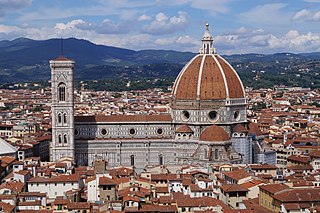Architecture Definitions and Theory
– Architecture refers to buildings and physical structures, encompassing design style and construction methods.
– It requires knowledge of art, science, technology, and humanity.
– Architectural theory explores aesthetics, cultural development, and semantic value.
– Notable figures like Plato, Michel Foucault, and Ludwig Wittgenstein have contributed to the discourse.
– Philosophy of architecture is intertwined with cultural development.
Historic Treatises
– ‘De architectura’ by Vitruvius emphasized durability, utility, and beauty in architecture.
– Leon Battista Alberti focused on proportion and ornamentation.
– Giorgio Vasari introduced the notion of style in the arts.
– Sebastiano Serlio’s ‘Complete Works on Architecture and Perspective’ emphasized practical aspects.
Architectural Styles
– Augustus Welby Northmore Pugin advocated for Gothic architecture.
– John Ruskin emphasized the importance of adornment in architecture.
– Le Corbusier highlighted the emotional impact and positive effect of architecture.
– Distinction between architecture and construction explored.
Evolution of Architecture
– Architecture originated as rural, oral vernacular architecture and evolved through trial and error.
– Ancient urban architecture focused on religious and political structures.
– Indian, Chinese, and Buddhist architecture influenced forms across Asia.
– Romanesque and Gothic cathedrals emerged in the Middle Ages, followed by Classical forms during the Renaissance.
– Modern architecture emerged after World War I, prioritizing modern techniques, materials, and geometric forms.
Modern Concepts and Sustainability
– Louis Sullivan promoted the idea that form should follow function.
– Modern architects are influenced by philosophies such as Rationalism, Structuralism, and Phenomenology.
– Sustainable architecture considers environmental impact and energy efficiency.
– Buildings should be constructed in an environmentally friendly manner.
– Complexity of buildings increased, leading to a multi-disciplinary approach. Source: https://en.wikipedia.org/wiki/Architecture
Architecture is the art and technique of designing and building, as distinguished from the skills associated with construction. It is both the process and the product of sketching, conceiving, planning, designing, and constructing buildings or other structures. The term comes from Latin architectura; from Ancient Greek ἀρχιτέκτων (arkhitéktōn) 'architect'; from ἀρχι- (arkhi-) 'chief', and τέκτων (téktōn) 'creator'. Architectural works, in the material form of buildings, are often perceived as cultural symbols and as works of art. Historical civilisations are often identified with their surviving architectural achievements.

The practice, which began in the prehistoric era, has been used as a way of expressing culture by civilizations on all seven continents. For this reason, architecture is considered to be a form of art. Texts on architecture have been written since ancient times. The earliest surviving text on architectural theories is the 1st century AD treatise De architectura by the Roman architect Vitruvius, according to whom a good building embodies firmitas, utilitas, and venustas (durability, utility, and beauty). Centuries later, Leon Battista Alberti developed his ideas further, seeing beauty as an objective quality of buildings to be found in their proportions. In the 19th century, Louis Sullivan declared that "form follows function". "Function" began to replace the classical "utility" and was understood to include not only practical but also aesthetic, psychological and cultural dimensions. The idea of sustainable architecture was introduced in the late 20th century.
Architecture began as rural, oral vernacular architecture that developed from trial and error to successful replication. Ancient urban architecture was preoccupied with building religious structures and buildings symbolizing the political power of rulers until Greek and Roman architecture shifted focus to civic virtues. Indian and Chinese architecture influenced forms all over Asia and Buddhist architecture in particular took diverse local flavors. During the Middle Ages, pan-European styles of Romanesque and Gothic cathedrals and abbeys emerged while the Renaissance favored Classical forms implemented by architects known by name. Later, the roles of architects and engineers became separated.
Modern architecture began after World War I as an avant-garde movement that sought to develop a completely new style appropriate for a new post-war social and economic order focused on meeting the needs of the middle and working classes. Emphasis was put on modern techniques, materials, and simplified geometric forms, paving the way for high-rise superstructures. Many architects became disillusioned with modernism which they perceived as ahistorical and anti-aesthetic, and postmodern and contemporary architecture developed. Over the years, the field of architectural construction has branched out to include everything from ship design to interior decorating.
